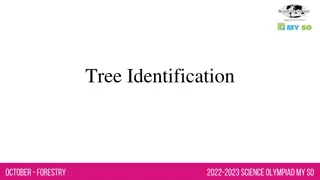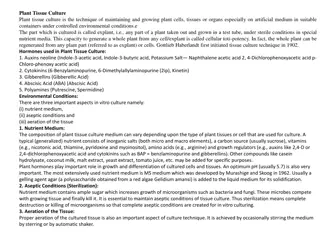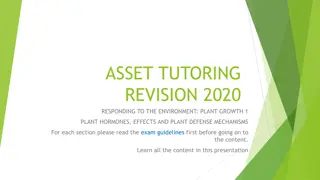
Deciduous Shrubs: Plant Identification Tips and Images
Discover various deciduous shrubs with detailed plant identification tips and images, including Japanese Barberry, Butterfly Bush, Winged Euonymus, Border Forsythia, Oakleaf Hydrangea, Bigleaf Hydrangea, and Flowering Quince. Learn about their unique characteristics and how to care for them in your landscape. This free resource is provided by Georgia Agricultural Education.
Download Presentation

Please find below an Image/Link to download the presentation.
The content on the website is provided AS IS for your information and personal use only. It may not be sold, licensed, or shared on other websites without obtaining consent from the author. If you encounter any issues during the download, it is possible that the publisher has removed the file from their server.
You are allowed to download the files provided on this website for personal or commercial use, subject to the condition that they are used lawfully. All files are the property of their respective owners.
The content on the website is provided AS IS for your information and personal use only. It may not be sold, licensed, or shared on other websites without obtaining consent from the author.
E N D
Presentation Transcript
NURSERY/LANDSCAPE PLANT ID TIPS SORTED BY CATEGORY This is a free resource provided by Georgia Agricultural Education Original creator: Melissa Riley, Central Region Horticulture Teacher
DECIDUOUS SHRUBS
JAPANESE BARBERRY Alternate, deciduous leaves Stem covered in thorns, very visible in the winter but hidden by leaves in spring and summer Leaves can be maroon to green to yellow Small flowers and berries
BUTTERFLY BUSH Opposite leaves Deciduous plant Underside of the leaf is white/greyish color 4-8 sided stem Blooms in several colors Large flower spike often remains on plant
WINGED EUONYMUS Burning Bush another name because of red fall color Deciduous shrub Corky wings on the bark Opposite leaves
BORDER FORSYTHIA Opposite buds Bark is speckled Hollow stem Bottom half of leaf smooth, top serrated Yellow flowers form before leaves
OAKLEAF HYDRANGEA Deciduous shrub Opposite leaves Leaves look similar to oak leaf Large, dark green leaves with silvery undersides and 3 7 lobes Orangey tint to stem and bark Older bark peels in thin flakes Flowers form in clusters/cones of white to pink.
BIGLEAF HYDRANGEA Deciduous shrub Opposite leaves Leaves are large, often serrated Very pronounced veins and a scale-like appearance to leaves Big, showy flower heads in white, pink, purple or blue
FLOWERING QUINCE Alternate leaves Glossy, dark green, oval to oblong leaves with serrated edges Large stipules (appear as small leaves at the base of larger leaves) Thorn and thornless varieties thorns are often hidden under leaves Elbows lack of terminal bud showy, vibrant red, pink, or white flowers that bloom early in spring before the leaves fully appear Fruit 2 in diameter
LANDSCAPE ROSE Alternate, compound leaf Usually with thorns on the stem Serrated leaves form in leaflets of typically 5-7 Flower buds have long sepals that overlap before opening New growth and stems are often red
SPIREA compact, deciduous shrub Alternate simple leaf Lance shaped serrated / sharply toothed leaf Pronounced midrib on underside of leaf Variety of flower colors Leaves emerges with pinkish-purple tints in spring and turns purplish- bronze in fall
SNOWBALL VIBURNUM Deciduous, large shrub Opposite, simple leaves with smooth or lighly toothed edges Branches are opposite and grow at a 45- degree angle forming a V for Viburnum large, showy, snowball-like clusters of white flowers
NOW LETS COMPARE SNOWBALL VIBURNUM OAKLEAF HYDRANGEA BIGLEAF HYDRANGEA Leaves are large, with serrated edges Leaves look similar to an oak leaf simple leaves with smooth or lightly toothed edges Branches are opposite and grow at a 45 degree angle forming a V for Viburnum Very pronounced veins and a scale-like appearance to leaves silvery undersides and 3 7 lobes
NOW LETS COMPARE BUTTERFLY BUSH FORSYTHIA Opposite! Lighter green leaf Top half serrated; bottom edges smooth Speckled bark Hollow stems SPIREA Alternate! Darker green leaf Serrated edges Dark, smooth bark Opposite Narrow leaf Both smooth and serrated varieties White/gray, fuzzy texture on the underside






















